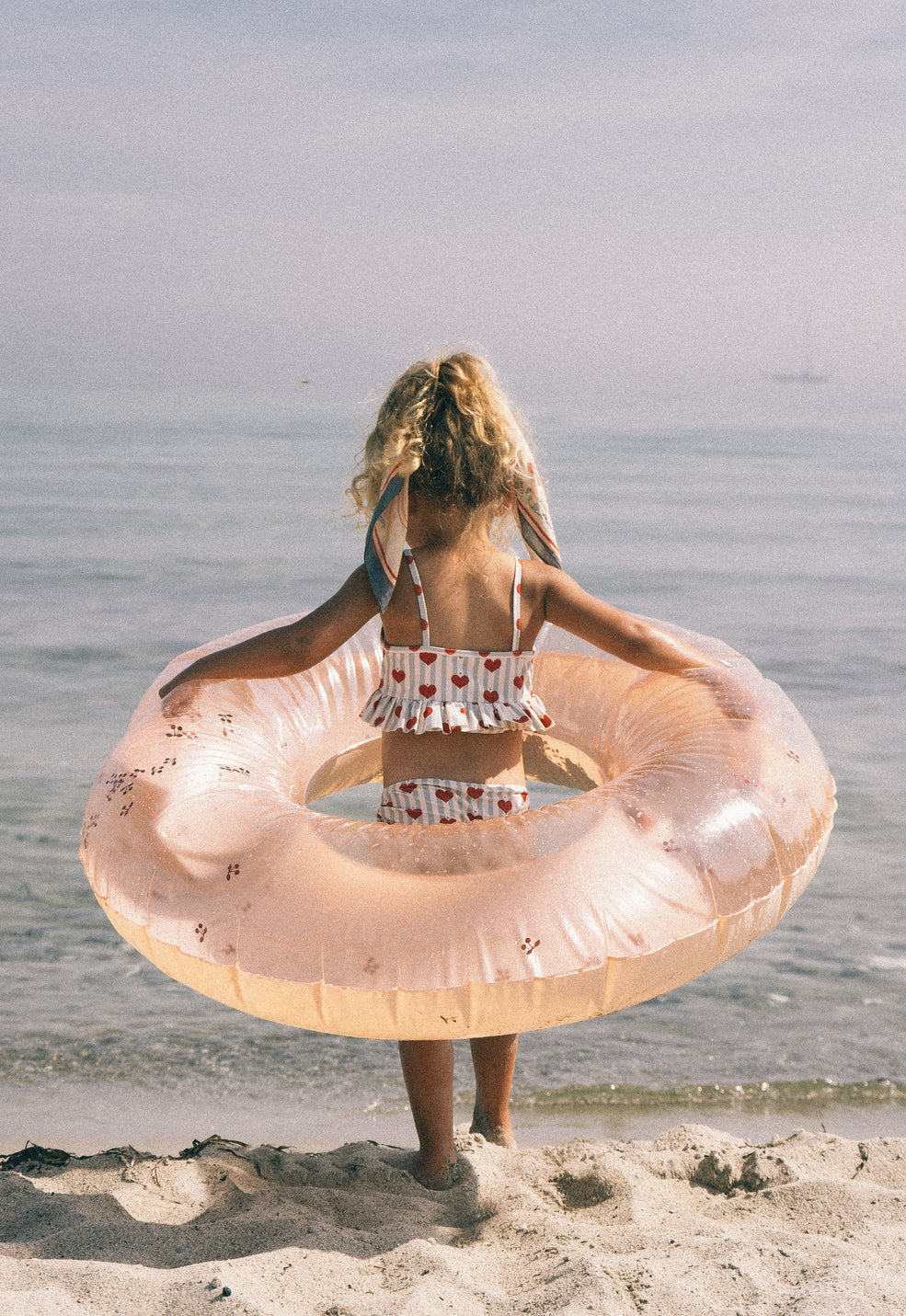Finally! The days are getting warmer and are inviting us to play, explore and experience things outside. But be careful! The sun is now shining more often and more strongly.

Today I would like to tell you more about the important topic of sun protection and sensitive children's skin. This topic is particularly dear to my heart because every summer I see sensitive, pale children's skin in the blazing sun in our swimming pools. I think many mothers are not aware enough of how sensitive children's skin is, that it can protect itself less than the skin of adults and how dangerous the long-term consequences of UV damage to children's skin are.
1. Children's skin

Children's skin, especially babies' skin, is much more sensitive to UV radiation than adult skin.
The reason for this is that baby and child skin is not yet fully developed .
- It is less able to protect itself against UV rays
- It is less able to repair damage caused by UV rays
In addition, it is much thinner than adult skin.
- The sensitive stem cells are much closer to the surface of the skin and are therefore more exposed to carcinogenic UV radiation than in adults

Baby skin is particularly at risk!
But children's skin is not yet able to produce pigments quickly enough to protect itself from UV rays. In addition, children's skin is unable to repair damage caused by UV radiation sufficiently, as this protective mechanism of the body only develops over the course of years.
It is therefore extremely important to avoid sunburn and even slight skin redness caused by the sun in children.
Babies under one year:
- should therefore NEVER be exposed to direct sunlight!
- No sunscreen in the first year of life
- No direct sun in the first year of life
Children should also :
- have as little direct sunlight as possible
- Direct sunlight should especially be avoided between 11am and 4pm
The natural protection time of baby and child skin is only a few minutes. This means that babies and children can get sunburn after just 5-10 minutes.
2. Protection:
As mentioned above, the best protection from UV rays is proper shade . (Parasols, trees and non-UV clothing often only filter visible light, but not all invisible UV light).
However, if children are in direct sunlight, good sunscreen is essential.
There are many sunscreens available. It is important to know that all sunscreens can never completely block the radiation.
Clothing is by far the best protection against UV radiation! UV clothing is much better than any other sunscreen. For this reason, I only want to talk about UV clothing as a sunscreen in this blog post. Sunscreens come second as a sunscreen and will be discussed separately in a later blog post.
3. UV clothing:
There is now more and more UV clothing available to buy.
Basically, every piece of clothing protects against UV radiation. However, the level of protection depends on the type, density and color of the fibers.
To be sure that a piece of clothing offers sufficient protection, you should look for the "UPF" designation when buying UV clothing. These items of clothing have been tested and have at least the specified sun protection factor. For example, "UPF 30+" or "UPF 50 +".
There are also different standards for testing the "UPF". There are 3 standards: Australian-New Zealand standard, European standard and UV standard 801.
The highest standard is UV standard 801 because here the measurements are carried out on wet and stretched garments. For the other two standards, the measurements are only carried out in a dry, new state.
Since the protection of UV clothing is achieved through the density and color of the fibers, a few points should be taken into account when caring for it.
Care instructions:
- UV clothing should not be bought too small (due to the stretching of the fibers)
- Wash as gently as possible. It is best to rinse with water only. (No detergents with brighteners, no fabric softeners, no spin cycle). The more stretched the fibers, the worse the protection. Anything that wears down the fibers in their structure and color reduces the UV protection.
- Do not hang in the sun (color fades faster)
4. Sun hats:
The same applies here as for UV clothing. It is also important to ensure that there is good shade on the face, neck and ears to protect the sensitive skin in these areas.

5. Sunglasses
Sunglasses offer protection against UV rays penetrating the eyes. UV rays can cause tissue damage to the conjunctiva and cornea and, in the long term, can also cause clouding of the lens.

Sunglasses marked UV 400 filter UV rays with a wavelength of up to 400 nanometers. This includes UVA and UVB radiation.
Sunglasses for children should be marked with category 3 :

Sunglasses without UV protection do more harm than good(!) and are even more harmful than not wearing sunglasses at all. The darkened lenses cause the pupils to dilate and allow even more UV radiation to penetrate.
Source images: Konges Slojd, Filibabba, Mister Spex, Unserhaut.de

